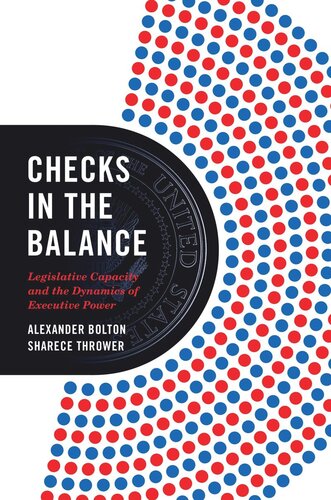

Most ebook files are in PDF format, so you can easily read them using various software such as Foxit Reader or directly on the Google Chrome browser.
Some ebook files are released by publishers in other formats such as .awz, .mobi, .epub, .fb2, etc. You may need to install specific software to read these formats on mobile/PC, such as Calibre.
Please read the tutorial at this link: https://ebookbell.com/faq
We offer FREE conversion to the popular formats you request; however, this may take some time. Therefore, right after payment, please email us, and we will try to provide the service as quickly as possible.
For some exceptional file formats or broken links (if any), please refrain from opening any disputes. Instead, email us first, and we will try to assist within a maximum of 6 hours.
EbookBell Team

4.8
104 reviewsHow access to resources and policymaking powers determines the balance of power between the legislative and executive branches
The specter of unbridled executive power looms large in the American political imagination. Are checks and balances enough to constrain ambitious executives? Checks in the Balance presents a new theory of separation of powers that brings legislative capacity to the fore, explaining why Congress and state legislatures must possess both the opportunities and the means to constrain presidents and governors—and why, without these tools, executive power will prevail.
Alexander Bolton and Sharece Thrower reveal how legislative capacity—which they conceive of as the combination of a legislature’s resources and policymaking powers—is the key to preventing the accumulation of power in the hands of an encroaching executive. They show how low-capacity legislatures face difficulties checking the executive through mechanisms such as discretion and oversight, and how presidents and governors unilaterally bypass such legislative adversaries to impose their will. When legislative capacity is high, however, the legislative branch can effectively stifle executives. Bolton and Thrower draw on a wealth of historical evidence on congressional capacity, oversight, discretion, and presidential unilateralism. They also examine thousands of gubernatorial executive orders, demonstrating how varying capacity in the states affects governors’ power.
Checks in the Balance affirms the centrality of legislatures in tempering executive power—and sheds vital new light on how and why they fail.